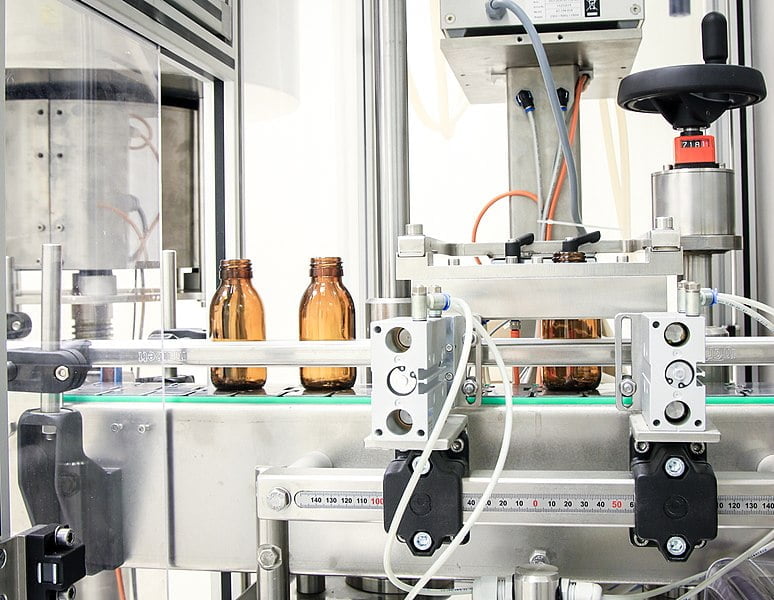
Examination of microbiological purity is next to the stress tests, and the stability test, one of the conditions for the admission of a cosmetic product for sale in the European Union countries.
The effects of microorganisms on the cosmetic.
Contamination of a cosmetic product with microorganisms has a number of consequences. As a result of the interaction of microorganisms with the ingredients of the product, its consistency, pH, color and fragrance may change. In addition, a microbiologically contaminated product may lose its properties. Most importantly, it is a threat to human health, causing inflammation, allergic reactions and infections.
Sources of microbial infections in cosmetic products
Microbiological contamination of the cosmetic may occur during production (primary infections) and during the use of the finished product (secondary infections). In order to minimize the risk of cosmetic contamination, the microbiological purity of the production environment is monitored at the production stage. It can include an analysis of the cleanliness of production lines, work surfaces and the air in the production area. As well as the cleanliness of staff protective clothing and hands. Frequent testing of the production environment allows for a quick response in the event of contamination. They can be performed by the in-house laboratory or by an external laboratory that offers analysis of swabs, prints and air. After leaving the production line, the cosmetic is still exposed to contamination during use. Therefore, it should contain appropriate preservatives, the effectiveness of which is subjected to a stress test. The only exception are cosmetics with low risk of microbial infection, the properties of which limit the possibility of contamination.
Cosmetics of low and high risk of microbial contamination
According to the guidelines of EN ISO 29621: 2017-04, low-risk microbiological products are cosmetics with specific physico-chemical properties. First of all, these are products characterized by a low water activity (e.g. lip balms), a pH value of ≤3.0 (e.g. peelings) or ≥10.0 (e.g. hair straightening products). This group also includes products containing ≥ 20% alcohol (e.g. perfumes), as well as cosmetics based on solvents (e.g. nail polishes). Other important factors affecting the susceptibility of a cosmetic to microbiological contamination are the type and size of packaging and the conditions of packaging. However, the risk of product contamination should be assessed individually for each product before withdrawing from stress testing. On the other hand, products with a high water content (e.g. lotions), with reduced preservative content and natural products are considered as cosmetics with a high risk of microbiological contamination.
Microbiological quality criteria of cosmetic products
In accordance with Regulation (EC) No. 1223/2009 of the European Parliament and of the Council of 30 November 2009 on cosmetic products, the cosmetic safety report, which is the basis for placing a cosmetic product on the market in the European Union, should contain information on the microbiological quality of the cosmetic product and the results of a cosmetic stress test. Both the above-mentioned tests and the entire cosmetic safety report are performed by Ekolabos Laboratory. The acceptance criteria for microbiological purity of cosmetic products in accordance with PN-EN ISO 17516:2014 are summarised in Table 1. According to the requirements presented in this standard, a qualitative test of a cosmetic should demonstrate the absence of the following opportunistic pathogens: Escherichia coli, Staphylococcus aureus, Pseudomonas aeruginosa and Candida albicans in 1 g or 1 ml of the cosmetic. Whereas, the criteria for accepting microbiological purity of cosmetics for quantitative research depend on the type of product. In the case of cosmetics for children, intended for use in eye area or on mucous membranes (category I), the maximum permissible amount of aerobic mesophilic bacteria is 100 cfu/g. However, in the case of other cosmetics, the result cannot exceed 1000 cfu/g.
Challange Test
The challange test is intended to demonstrate the effectiveness of the preservative used in it and is not required only for cosmetics with a low risk of microbial contamination. According to the PN-EN ISO 11930: 2012 standard, the method consists in contamination of the tested sample with given bacterial strains, and then checking the level of the microbiological contamination of the product in a given period of time after 7, 14 and 28 days.
Table 1. Acceptance criteria for microbiological purity of cosmetic products in accordance with PN-EN ISO 17516: 2014
| Parameter tested | Cosmetic products intended for children under three years of age, applied around the eyes or on mucous membranes | Other products |
| Total number of aerobic mesophilic organisms | ≤ 1 x 102 cfu per g or 1 ml | ≤ 1 x 103 cfu per 1 g or 1 ml |
| Escherichia coli | Not present in 1 g or 1 ml | Not present in 1 g or 1 ml |
| Staphylococcus aureus | Not present in 1 g or 1 ml | Not present in 1 g or 1 ml |
| Pseudomonas aeruginosa | Not present in 1 g or 1 ml | Not present in 1 g or 1 ml |
| Candida albicans | Not present in 1 g or 1 ml | Not present in 1 g or 1 ml |
